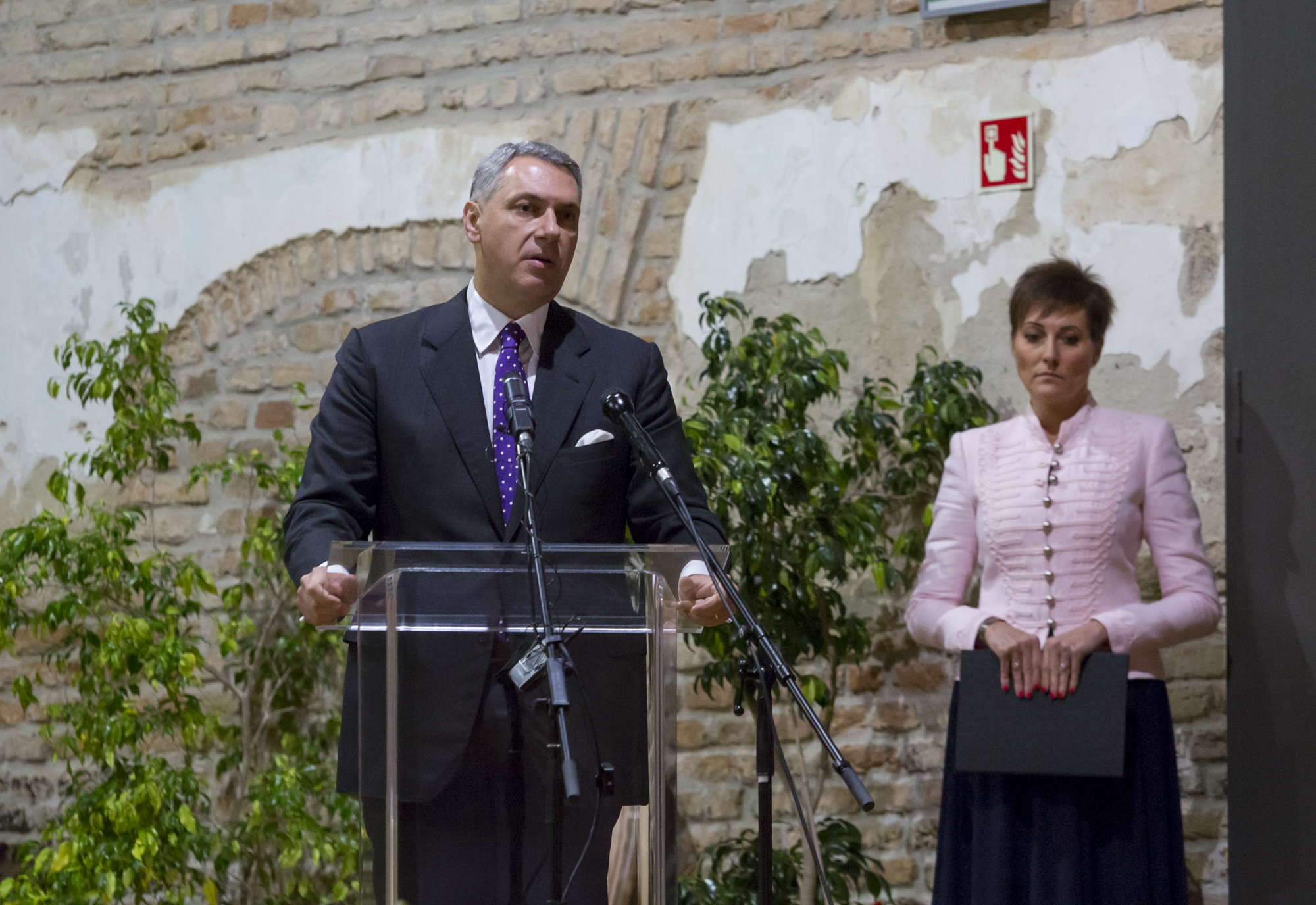
The architecture of the 21st century must be national, the old is
always better and more beautiful than the new, said János Lázár,
Minister of Construction and Investment, at the 3rd Mihály
Mőcsényi Conference on Garden Art and Garden History in Fertőd,
Hungary. The Minister announced that the government will submit a
new building concept to the National Assembly in the autumn,
which will include a special chapter on the protection of cultural
heritage.
For the third time, the Esterházy Manor in Fertőd hosted a series of conferences named after Mihály Mőcsényi, a prominent figure in Hungarian landscape architecture education, and a Széchenyi, Kossuth and Geoffrey Jellicoe Prize-winning landscape architect. While last year the focus was on Baroque garden art, this year it was on the relationship between music and garden art. Opening the international conference, János Lázár, Minister of Construction and Investment, said that for the first time in 30 years, Hungary has a Ministry of Construction again, which will also give Hungarian cultural heritage protection its rightful place in the organisational structure. János Lázár said that as the minister in charge of the area, he is in favour of national architecture instead of postmodern contemporary architecture. János Lázár expects difficult debates on the issue, but he said there is one cornerstone of the government’s position: what was built before or after World War II in the spirit of national architecture needs protection and support. “In the architectural segment of the contemporary Hungarian government policy, the old must be given a more important role than the new, because our first duty is to restore the old, to put it into use and to take possession of it,” the minister said, adding that this also applies to the protection of city centres that are loosing their functions and population as well as to the many state-owned buildings. At the same time, János Lázár emphasised that it is not only necessary to build, but also to utilise, and for this purpose they are also open to private capital. “By 2030, Hungary must achieve the goal of rebuilding its monuments and giving them a new function. This requires new regulations, new business structures, but above all social support,” said János Lázár.
Dr. Ágnes Herczeg, the president of the Hungarian Garden Heritage Foundation (HGHF), which organised the conference, recalled that the launch of the HGHF was announced in Eszterháza a year ago. As a professional civil umbrella organisation, they set themselves the goal of playing a leading role in the conservation and renewal of the almost two thousand historic gardens and gardens of historical value in Hungary, from active participation in the development of the legal environment, through the development of economic and ecological sustainability models, to bringing the issue of garden heritage back into the public consciousness. The MKA President said that the events of recent years, the quarantine imposed by the epidemic, the drought caused by climate change and the increased demand for our natural resources due to the energy crisis, are making more and more people aware of the importance of the built heritage, the natural heritage and the garden heritage that combines the two. “As the ones responsible for the cultivation of gardens, we too must bow down to ensure that the Hungarian garden heritage can rise again,” said Ágnes Herczeg.
Katalin Egresitsné Firtl, the managing director of the co-organising host Eszterháza Cultural, Research and Festival Centre Non-profit Ltd., reminded in her welcome speech that the three pillars of Eszterháza are the built, natural and cultural-spiritual heritage, including the musical heritage thanks to Haydn’s work. Together, Eszterháza is an indisputably authentic place,” she added, assuring the audience that this very rich and valuable heritage, with its multiple cultural layers, is being cared for with dedication. According to Katalin Egresitsné Firtl, just as Miklós Esterházy “the Splendid” enriched and created this unique Baroque landscape with curiosities unknown in the 18th century, so too today we need to find a sustainable natural environment that is in keeping with the built heritage. This year, the Mihály Mőcsényi conference focused on the relationship between garden art and music, and featured renowned Hungarian garden historians and music historians who gave an insight into the great encounters between garden art and music. One of the speakers at the conference was music historian Dániel Mona, who, in addition to introducing participants to the relationship between Beethoven and Martonvásár, guided participants on an interactive music walk entitled “Sounds from the Garden” on 1 October, World Music Day. Márton Rácz conductor and Gábor Zoboki, Kossuth and Ybl Prize-winning Hungarian architect and university professor, president of the Wagner Society in Hungary, also made presentations about the relationship between gardens and music. On 1 October, as part of the Family Day, Ádám Bősze, music historian and presenter of Radio Bartók, was speaking about the special relationship of the Romantic master Mendelssohn and his family to their garden, not only for a professional audience. International speakers also joined the symposium online, where they introduced the role of music in the development of English, French and Italian historic gardens, past and present. Speakers included Gillian Mawrey, founder and president of the Historic Gardens Foundation, and Stefano Trevisi, artistic director of the Benetton Foundation’s Musica Antica in Casa Cozzi programme. In addition to the professional and artistic programmes, the three-day conference also included children’s and family activities free of charge. And for groups of students, the organisers were offering a free, organised educational programme to help them get to know details of music and garden art better.

